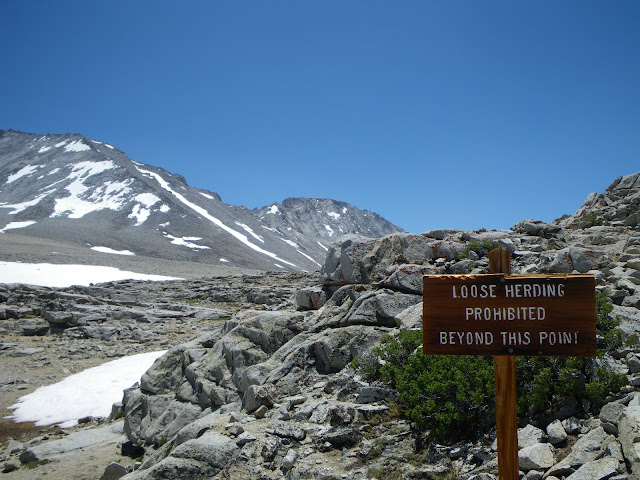Craig
New member
While hiking the other day I ran across this trail sign at 12K

While hiking in CO and CA I have run across horsepackers, packmules and packgoats while on the trail. I hadn't heard the term "loose herding" before and as you can see there isn't a lot of vegetation in this area to graze on.
Intrigued I did a search got this information.
This sign was located on the boundry of a NF and NP. I suspect "loose herding" isn't allowed in this NP.
Additionally, I found this bit of trail etiquette.
Is there any other info relative to meeting stock animals in the backcountry that would be helpful for hikers heading out west?

While hiking in CO and CA I have run across horsepackers, packmules and packgoats while on the trail. I hadn't heard the term "loose herding" before and as you can see there isn't a lot of vegetation in this area to graze on.
Intrigued I did a search got this information.
LinkIt's common to let a herd of horses loose at camp without restraint while keeping the herd boss restrained. Loose herding is a great way to minimize impact because grazing and trampling are spread over a large area. With this technique, it is possible to camp in an area and move on with little indication that the area has ever been used. The disadvantage to loose herding, however, is that horses are not easily controlled. Thus there is more chance that your horse might run off in the night.
This sign was located on the boundry of a NF and NP. I suspect "loose herding" isn't allowed in this NP.
Additionally, I found this bit of trail etiquette.
LinkFew hikers know that they should pull off to the downhill side of the trail when encountering stock; you may need to ask them to hold up while you pass. If you are the one being overtaken, remember the hiker is packing a load and has a right to be on the trail too. Find a good spot to let them pass. A little conversation while you pass each other may reduce the chances of your horse being spooked.
Is there any other info relative to meeting stock animals in the backcountry that would be helpful for hikers heading out west?
